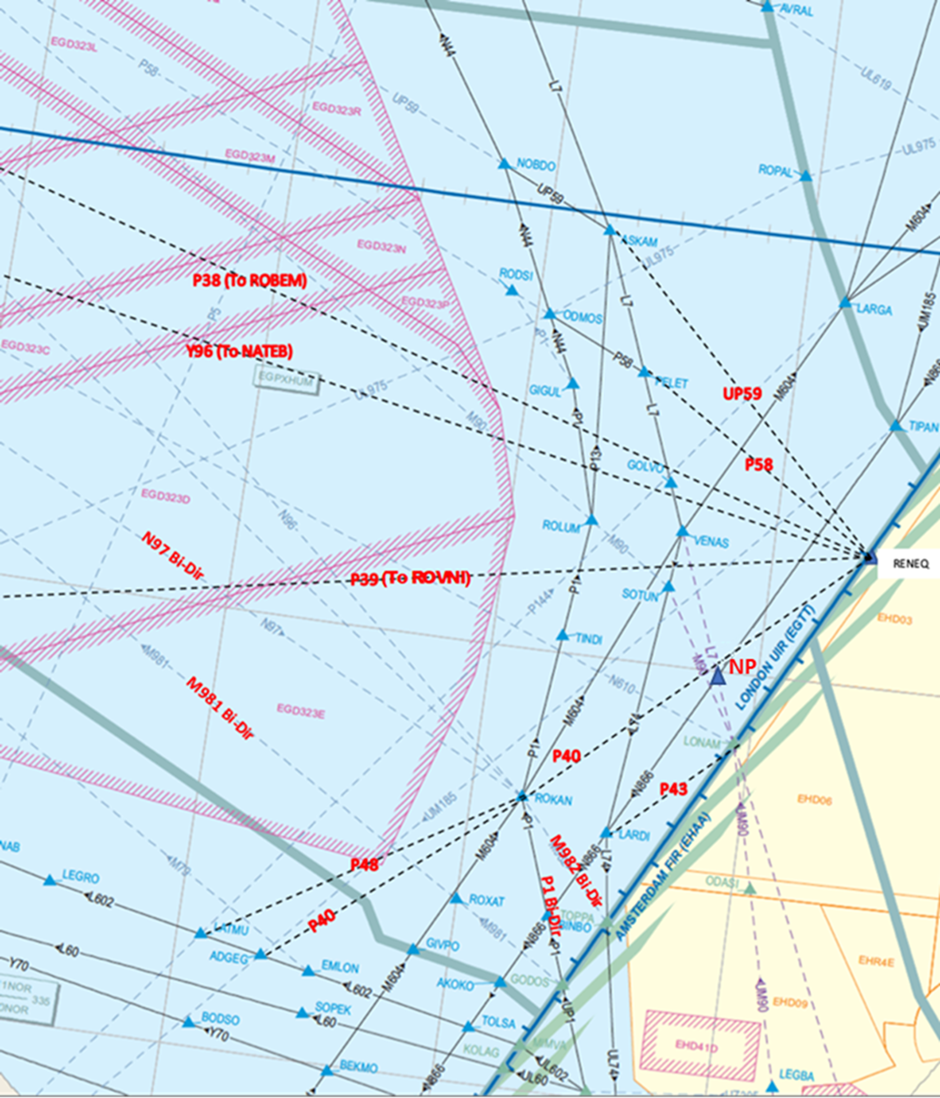Operational Service Enhancements Project:- New Amsterdam/London UIR Crossing Point
Published responses
View submitted responses where consent has been given to publish the response.
Overview
NATS as part of their Operational Service Enhancements Project (OSEP) are proposing to provide improved connectivity at the interface between the Amsterdam and London Upper Flight Information Regions (UIRs). This will be achieved by introducing 5 new conditional routes, extending 3 existing routes as well as amending the availability of 2 night-time fuel saving routes (NTFSRs)

This change was initiated following the introduction of Free Route Airspace within the Amsterdam UIR. Maastricht Upper Area Control (MUAC), the Air Navigation Service Provider, within the Amsterdam UIR identified the need for improved connectivity at this interface and are introducing a new crossing point (COP) called RENEQ. Whilst MUAC are able to introduce a new COP at the UIR interface, connectivity between this COP and the UK ATS route network is achieved through the CAA's Airspace Change Process. This ACP seeks to provide new connectivity between the UK ATS route network and this new COP as well as improving the existing connectivity.
This change occurs over the high seas above FL245, requires no new introduction of controlled airspace or any alteration to flights below 7000 ft. As such, the CAA has categorised this ACP as a Level 2B change.
NATS welcomes your feedback to develop this airspace change proposal.
Why your views matter
The purpose of this consultation is to provide all stakeholders and any interested parties with an overview of the benefits achievable by this proposed airspace change comprising the introduction of 5 new conditional routes, extention of 3 existing conditional routes and the amendment of 2 night-time fuel saving routes (NTFSRs) at the interface of the Amsterdam and UK UIRs. These benefits are detailed in the consultation document below and interested parties are offered the opportunity to contribute feedback on details within this airspace change proposal (ACP).
As such we are seeking feedback from any stakeholders who may be affected. Primarily this is likely to be users of the airspace and aviation stakeholders. Nonetheless we welcome feedback from any interested parties.
The consultation begins on 3rd March 2022 and subsequently closes on the 14th April 2022, a period of 6 weeks.
Consultation Material (please download)
Your feedback will be sent to the CAA and will be published after moderation.
What happens next
During consultation we gathered feedback from stakeholders and any interested parties.
Responses will then be analysed and themed. Shortly after the consultation finishes we will publish a consultation feedback document, which will summarise the themes and NATS’ response to any issues raised.
The feedback document will be available for download via the CAA portal. Any new requirements identified will be considered in the on-going design process. The ACP will detail the design being submitted and make reference to changes that have been made to take account of consultation feedback.


Share
Share on Twitter Share on Facebook